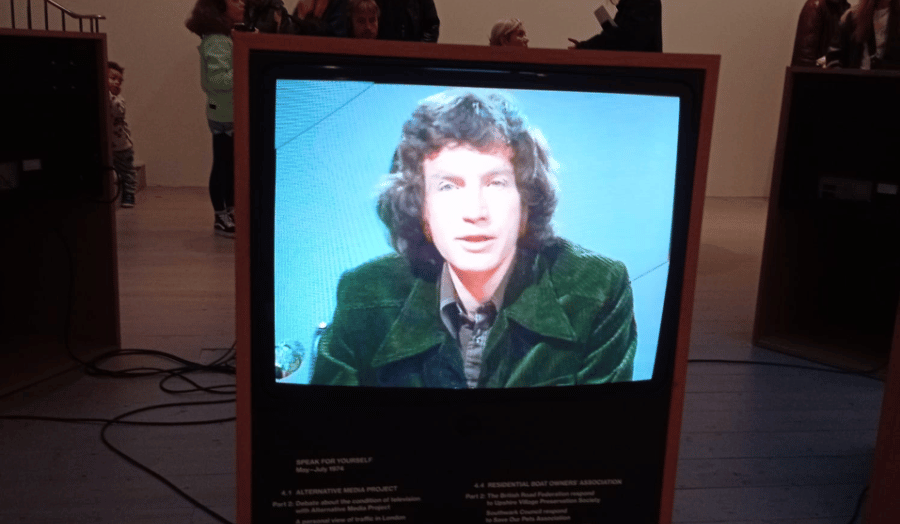Dr Peter Lewis discusses a new exhibition which shows the radical television experiments of the 1970s.
Date: 14 March 2023
Want to time travel back 50 years to an era without mobile phones, internet, social media or Netflix? Even access to a telephone was difficult then - you were overheard at home, and public phone boxes were often vandalized. You could meet face-to-face of course, but want to arrange another meeting? Don’t reach for your mobile: they don’t exist yet. And as for TV, 50 years ago in Britain your choice was only BBC 1, BBC 2 or ITV and the range of opinion they offered was very limited.
A new exhibition, People Make Television, five minutes’ walk from the University’s Aldgate campus and running till the end of March, shows some of the radical television experiments that landed in this environment to blow open the 1970s mediascape – and the strong link to a current London Met staff member who played a leading role in them.
The new technology of portable video gave ordinary people a chance to Speak for Yourself, the title of an ITV series presented by Peter Lewis, now Professor of Media and Culture in the School of Computing and Digital Media. The government allowed channels for local programming on cable networks in five towns and cities across England, including Bristol, where Rediffusion’s Bristol Channel TV station was managed by Peter Lewis. At the same time, the BBC launched the Community Programme Unit whose Open Door series selected, from many applicants, groups and communities who were given studio time and crew to express their views The Raven Row gallery is screening a selection of these broadcasts and cablecasts, intriguingly arranged in the many rooms and spaces in the gallery’s 17th century building.
The Canadian National Film Board’s Challenge for Change project was the key influence in Britain. Used in community development, video allowed people to articulate their views and experiences and see, edit and improve their presentation. Repeated screenings in the community allowed a campaign to gather support and strength. John ‘Hoppy’ Hopkins and Ed Berman’s Interaction were the first to use this method in London, and Peter Lewis had been one of the first to write about how it might be applied in the cable industry’s local channels.

People Make Television
28 January to 26 March 2023
FREE
The Raven Row Gallery
56 Artillery Lane
London E1 7LS
T +44 (0)20 7377 4300
info@ravenrow.org
Wednesday to Sunday, 11am–6pm
---
A consultant for the exhibition, Peter Lewis writes about his Bristol experience in the exhibition’s (free) programme. Entrance is also free and if you are interested in this area, check out, in the University’s Special Collection, the Community Media collection, full of original documents from this remarkable period in the democratisation of television.
